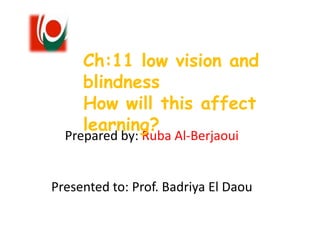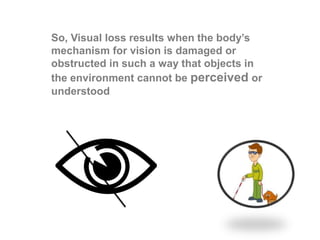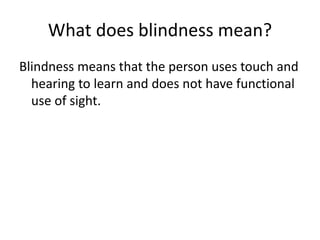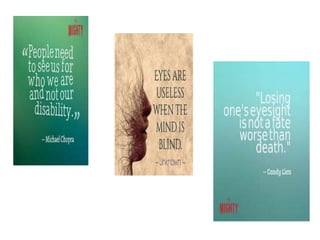The document discusses the impact of low vision and blindness on learning, defining both conditions and highlighting their prevalence and causes. It emphasizes the importance of early intervention, assessment, and specialized teaching methods to cater to the needs of students with visual impairments. Strategies for collaboration, prevention, and technology usage are also outlined to support these students in educational settings.



































